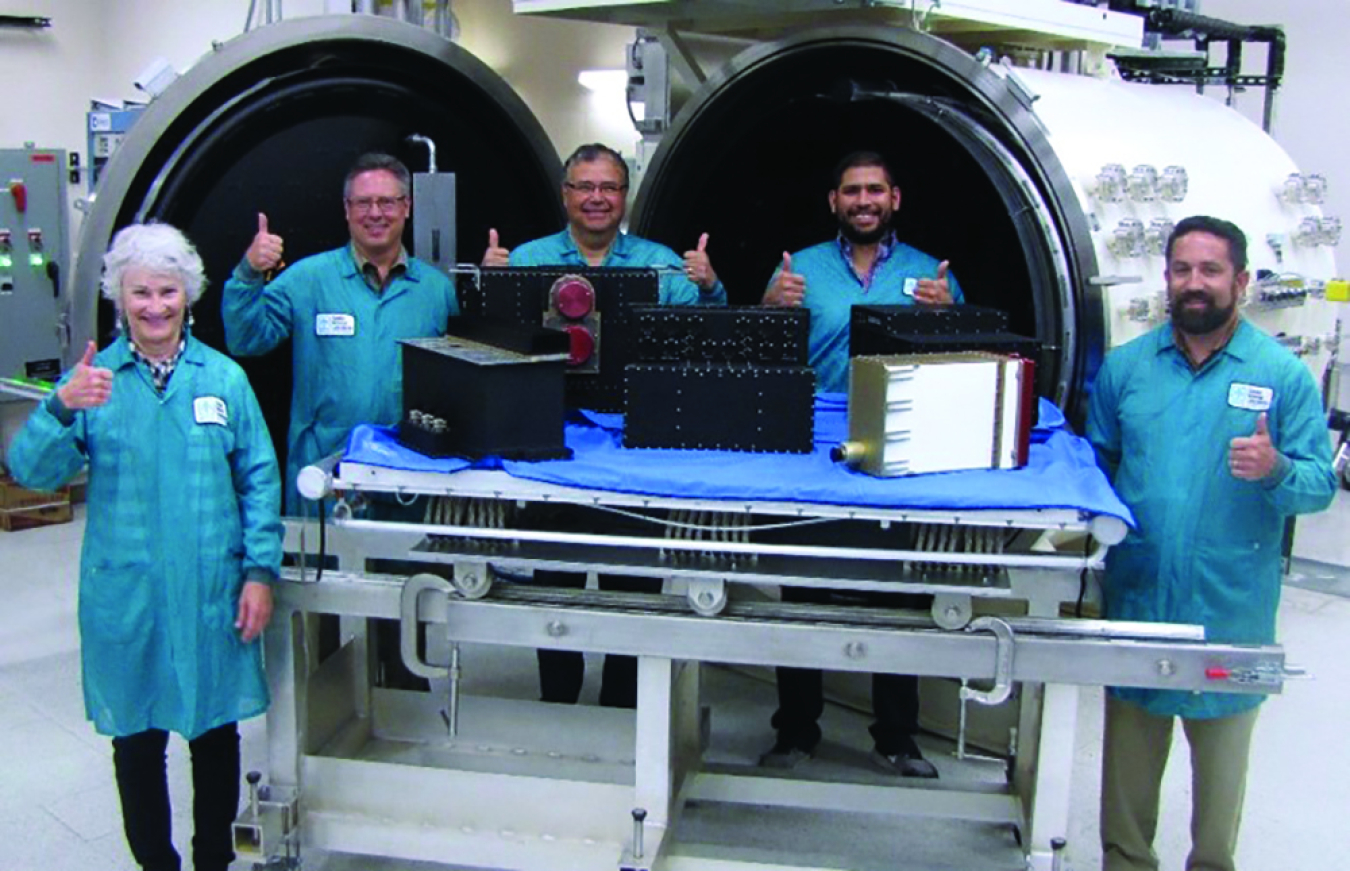Space-based nuclear explosion sensors are a vital U.S. capability to both monitor compliance with treaties.
National Nuclear Security Administration
March 22, 2018
Members of the GBD III 1-8 Team from Sandia National Laboratories, celebrate the final production delivery of the III 1-8 Blk. P, a space-based nuclear explosion sensor.
The second Space and Atmospheric Burst Reporting System (SABRS-2) payload, which was deployed in 2016.
Space-based nuclear explosion sensors are a vital U.S. capability to both monitor compliance with treaties such as the Limited Test Ban Treaty and the Threshold Test Ban Treaty, and to support the nuclear warfighting mission. NNSA’s Defense Nuclear Nonproliferation Research and Development (DNN R&D) program and its predecessors, along with other government partners, have been providing this space-based detection capability to the U.S. government for more than 50 years.
Beginning in 1963, the Atomic Energy Commission and the U.S. Air Force launched the first of 12 Vela satellites to detect aboveground nuclear testing in the atmosphere or in space. In subsequent years, more advanced sensors have been hosted on the Defense Support Program, Global Positioning System (GPS), and other U.S. government satellites. These systems monitor the entire globe, 24/7, for nuclear detonations - offering timely information to U.S. policymakers and the Department of Defense (DOD).
Sandia National Laboratories and Los Alamos National Laboratory, both with a highly skilled workforce, leverage their unique nuclear weapons design and phenomenology knowledge to develop, integrate, and test the sensor payloads for NNSA. This work includes close collaboration with government stakeholders, host satellite owners, satellite industry contractors, and U.S. Air Force operators to ensure these systems accomplish the mission. The most recently deployed systems are the Global Burst Detector (GBD) payloads on GPS satellites and the second Space and Atmospheric Burst Reporting System (SABRS) payload on a U.S. government satellite.
The next generation of GBD payloads hosted on GPS satellites will launch in 2018. After delivery by NNSA to the U.S. Air Force, GBD payloads will continue with integration and testing at the satellite production facility, then ship to the payload and launch processing facilities near Cape Canaveral, Florida. Following successful launch operations, DOD and NNSA lab teams will complete deployment with early on-orbit testing, ensuring the GBD is operational.
The U.S. Air Force Space Test Program satellite STPSat-6 will host the next SABRS payload scheduled to launch in 2019. The SABRS payload is in the final stages of integration and testing at Los Alamos, anticipating delivery to the STPSat-6 satellite production facility in the summer of 2018. From there SABRS will proceed to Cape Canaveral for integration with its rocket and deploy into geostationary earth orbit.
In addition to the next SABRS payload, STPSat-6 also will host an experimental NNSA payload called SENSER. The SENSER payload will reduce the development risk for future nuclear explosion detection sensors by testing and evaluating critical technologies in the space environment before production and integration into the next generation of systems.
This long-range planning, combined with continued close collaboration among mission stakeholders and partners, is critical to ensuring the vital nuclear detonation detection capability is continuously ready to secure U.S. national security interests.
You can read more about NNSA’s Defense Nuclear Nonproliferation work in the latest DNN Sentinel Newsletter.

